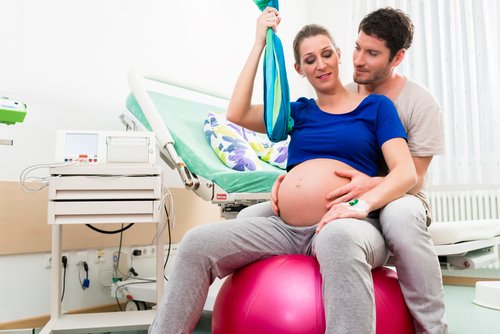What Are the Best Positions for Giving Birth?

However, specialists provide a number of reasons why this position isn’t favorable for childbirth.
So the question is, what are the best positions for giving birth?
Many scholars and gynecological professionals have made enormous claims against what is the most common birthing position in the US today.
This consists of the mother lying on her back in the supine position. Doctors often place the mothers’ legs in stirrups in order to avoid movement.
There are two reasons behind the use of the lithotomy position.
First, it allows for constant control of the baby’s heart rate. However, the World Health Organization states that this intervention is unnecessary in many cases.
The other reason behind the common use of this position is – as strange as it may seem – the comfort of the medical staff.
Given that it’s difficult to tend to a woman who moves around and changes position, doctors often implement this birthing method.
In other words, the lithotomy position is based on the comfort of the medical professionals, and not on the needs of the patient.
Risks to giving birth in the supine position
It’s important to also highlight the risks of adopting this position for childbirth:
- Possible danger to the baby, as the position causes the compression of the blood vessels that administer oxygenated blood to the little one.
- Increased pain for the mother.
- The position rules out the possible assistance of gravity in the birthing process.
- The immobility of the mother, which delays dilation and, or course, birth.
- Potential risk of serious perineal injury.
- The position involves invasive medicalization of childbirth, which isn’t always necessary.
The best positions for giving birth
Keeping in mind the above information, we’ll provide a detailed list of the best birthing positions.
The choice will depend on the specific personal preferences and needs of each mother.

1. With the torso upright
This position can involve standing or being on one’s knees. The first main advantages are that the force of gravity aids in the baby’s descent.
Another advantage is that the fetus and the pelvis are correctly aligned.
Furthermore, the position doesn’t place pressure on the principle blood vessels. As a result, there is no risk that the mother or baby suffer arterial hypertension.
Therefore, the contractions will be more intense and effective, and at the same time less painful.
The disadvantage to this position is the diminished ability to control one’s pushing. Therefore, if the expulsion occurs too quickly, there’s a possibility of tearing.
This position also makes it more difficult for someone else to assist in the birthing process.
2. Seated
The mother can sit on a bed, the floor, a ball, or facing backwards on a chair. This position has similar benefits to those of the upright position in regards to gravity and alignment.
When the baby’s head crowns, the mother should change to another position in order to make the baby’s exit possible.
However, the position is positive in that it allows for monitoring and the application of an epidural. Furthermore, the woman can take rests.
“Many scholars and gynecological professionals have made enormous claims against what is the most common birthing position in the US today”
3. Lying on one side
Lying on one side allows for the relaxation of the lower back and for efficient blood circulation in the legs.
As this position doesn’t place pressure on the mother’s blood vessels, it’s especially beneficial in cases of high or low blood pressure.
Again, the contractions will be longer but also more effective.
This is thought to be one of the most effective positions, given that it allows for the mother to rest and considerably reduces the risk or perineal injury.
4. Kneeling position
In general, the woman kneels down on a bed. She should allow her weight to fall on her heels.
At the same time, she separates her knees as much as possible while keeping the tips of her feet together. This position boosts dilation.

While this position does make the birthing process a little longer, gravity doesn’t present any difficulties.
Furthermore, kneeling in this manner allows for maximum oxygenation and takes the burden off the mother’s back.
This position may be too tiring for a long delivery, but the mother may rest her torso on a birthing ball for a few moments. Kneeling also allows her to receive a comforting back massage.
Finally, it’s necessary to point out that there is no one ideal position.
What’s important, in any case, is that the woman be free to move around and choose the position that her body demands at any given moment.
However, this is difficult, because medical assistance makes it almost impossible.
Therefore, it’s best to look for a middle ground where the mother feels free yet has the possibility of receiving assistance.
Many hospitals are taking measures to make it more possible for women to adopt alternative birthing positions.
This text is provided for informational purposes only and does not replace consultation with a professional. If in doubt, consult your specialist.
